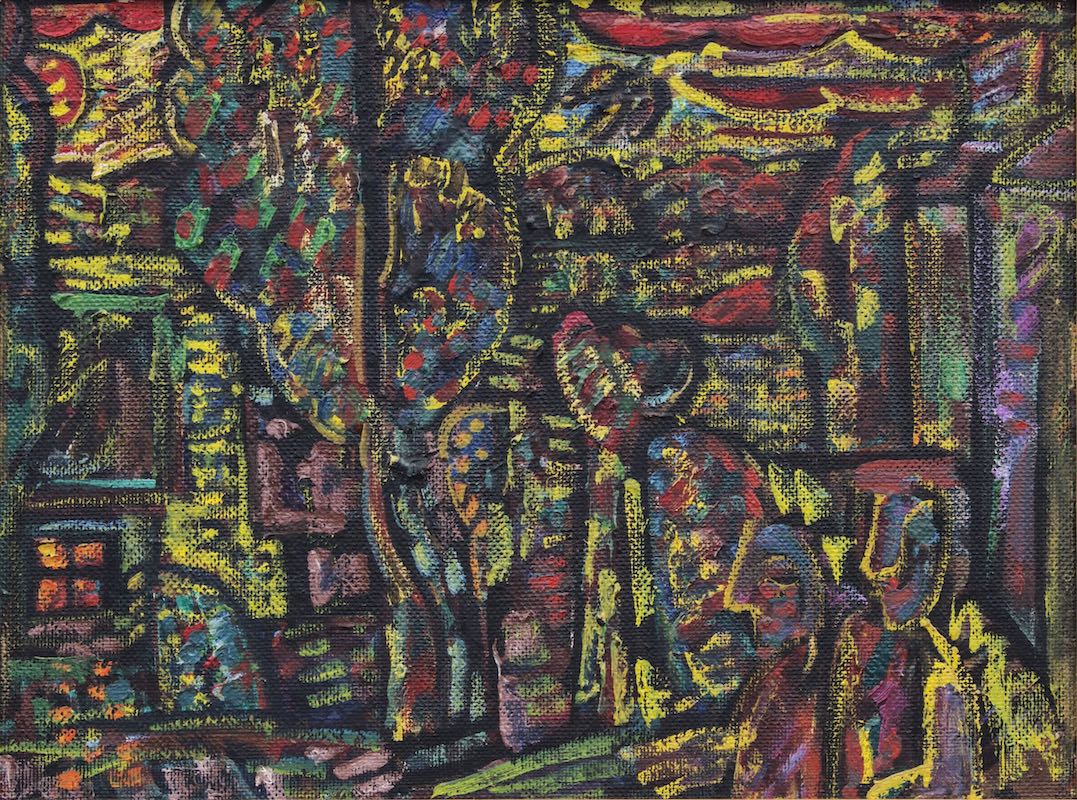Antanas Martinaitis (1939-1986) and his colleagues.
The long-living four-year fine arts’ school of the city was given the name of Antanas Martinaitis only in this century. This art school is famous not only for having employed the famous painter of the 20th century, but also his comrades. Martinaitis was working along with the painters Povilas Ričardas Vaitiekūnas, Laima Drazdauskaitė, graphic artist Edmundas Saladžius, aquarellist Algirdas Lukštas and others, all of whom have left an indelible impression on the majority of the younger artists.
This was the school (back then it was called Kaunas four-year children’s art school, located in Tartu St.) where Saladžius and Vaitiekūnas would draw “stories” on a same sheet of paper with Antanas Martinaitis in 1970s and 80s. They later summarised these spontaneous colourful composition with a name “Psychedelia”. The school was lead by a beloved principal Laima Baranauskienė at that time and was commonly known as an excellent refuge for painters tormented by the grey and red regime. Saladžius remembers Martinaitis often taking the role of master of ceremonies in this oasis of fine arts, a school microworld, with remarkable optimism and cheer. The leisure did not go to waste too, the painters would paint their “psychedelia” while fantasizing about literature, art, travel and things that were out of reach (the West seemed like a utopia from behind the so-called iron curtain).
Free schedule (time off from marking the work of students), spontaneity and brainstorming of the teachers allowed for the creation of such works. They were not thinking about showing these pieces anywhere and if it wasn’t for their colleague Laima Drazdauskaitė, who used to collect these visual stories, we would not have known about their existence.
Almost all colleagues were good friends and could not be satisfied by just talk, they’d start drawing characters and subjects of their stories, others would start adding more and more, thus creating conceptually inclined drawings. Saladžius would often remember what he used to draw. He used to travel a lot back then and although there were not any trips to Western Europe, he had friends in the Caucasus, so he would visit there. He would draw Istanbul, Armenian locations. The pencil made commenting on conversations easier. According to Saladžius: “We would do everything in jest… What did we use to draw? Anything within reach, there were pencils, marker pens left on the table. This gave way for small fun pictures teetering on the edge of insanity. That why we used to call them psychedelia. Such a fantasy provoking game. Everything happened so easily and naturally. A thought would concur with the pencil line”.
Some time later the painters along with Drazdauskaitė tried to identify the authors of the drawings, Drazdauskaitė gave a lot of the drawings to Antanas’ son, Arvydas Martinaitis, others were given to a museum. These drawings are quite difficult to “read” after all these years, it contains everything – wit, irony, poetic moods, romance mixed with harsh critique, and so many particular events that we are unable to decode any more, we can just sense them. At the same time, these drawing are pages in the history of the school and a great representation of otherness, free-thinking and independent creativity.
Back to the map

